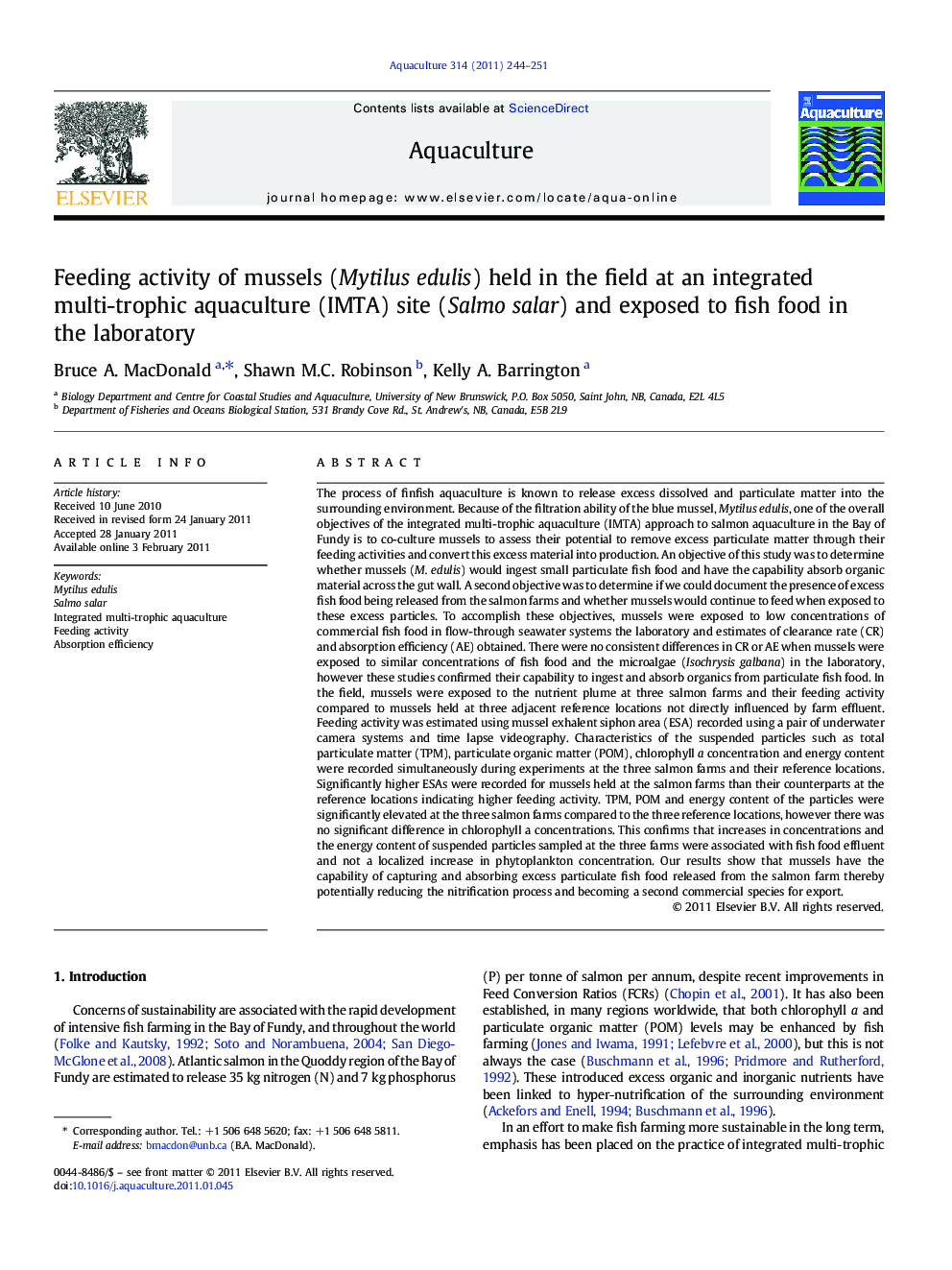| کد مقاله | کد نشریه | سال انتشار | مقاله انگلیسی | نسخه تمام متن |
|---|---|---|---|---|
| 2423128 | 1552911 | 2011 | 8 صفحه PDF | دانلود رایگان |

The process of finfish aquaculture is known to release excess dissolved and particulate matter into the surrounding environment. Because of the filtration ability of the blue mussel, Mytilus edulis, one of the overall objectives of the integrated multi-trophic aquaculture (IMTA) approach to salmon aquaculture in the Bay of Fundy is to co-culture mussels to assess their potential to remove excess particulate matter through their feeding activities and convert this excess material into production. An objective of this study was to determine whether mussels (M. edulis) would ingest small particulate fish food and have the capability absorb organic material across the gut wall. A second objective was to determine if we could document the presence of excess fish food being released from the salmon farms and whether mussels would continue to feed when exposed to these excess particles. To accomplish these objectives, mussels were exposed to low concentrations of commercial fish food in flow-through seawater systems the laboratory and estimates of clearance rate (CR) and absorption efficiency (AE) obtained. There were no consistent differences in CR or AE when mussels were exposed to similar concentrations of fish food and the microalgae (Isochrysis galbana) in the laboratory, however these studies confirmed their capability to ingest and absorb organics from particulate fish food. In the field, mussels were exposed to the nutrient plume at three salmon farms and their feeding activity compared to mussels held at three adjacent reference locations not directly influenced by farm effluent. Feeding activity was estimated using mussel exhalent siphon area (ESA) recorded using a pair of underwater camera systems and time lapse videography. Characteristics of the suspended particles such as total particulate matter (TPM), particulate organic matter (POM), chlorophyll a concentration and energy content were recorded simultaneously during experiments at the three salmon farms and their reference locations. Significantly higher ESAs were recorded for mussels held at the salmon farms than their counterparts at the reference locations indicating higher feeding activity. TPM, POM and energy content of the particles were significantly elevated at the three salmon farms compared to the three reference locations, however there was no significant difference in chlorophyll a concentrations. This confirms that increases in concentrations and the energy content of suspended particles sampled at the three farms were associated with fish food effluent and not a localized increase in phytoplankton concentration. Our results show that mussels have the capability of capturing and absorbing excess particulate fish food released from the salmon farm thereby potentially reducing the nitrification process and becoming a second commercial species for export.
Journal: Aquaculture - Volume 314, Issues 1–4, 4 April 2011, Pages 244–251